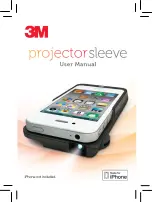
40
Appendix
Appendix
Bluetooth
®
function
Version
Bluetooth
®
standard Ver. 4.1
Output
Bluetooth
®
standard Power Class 1
Communication
distance
*4
Within 10 m with no obstacles in
the range
Compatible
profiles
*5
OPP (Object Push Profile
)
HSP (Headset Profile
)
HFP (Hands-Free Profile
)
A2DP (Advanced Audio
Distribution Profile
)
AVRCP (Audio/Video Remote
Control Profile
)
SPP (Serial Port Profile
)
PBAP (Phone Book Access
Profile
)
HID (Human Interface Device
Profile
)
PAN (Personal Area Networking
Profile
)
DUN (Dial-up Networking Profile
)
*6
SAP (SIM Access Profile
)
HOGP (HID over GATT Profile
)
Frequency
bands
2.4 GHz band (2.402 GHz to
2.480 GHz)
TV
(Continuous
watching
time)
1Seg
Approx. 530 min.
Full Seg
Approx. 360 min.
*1 32GB:SCV31MKA/SCV31MWA/SCV31MNA
64GB:SCV31MKB/SCV31MWB/SCV31MNB
*2 The continuous call time and continuous stand-by time may drop to less than
half depending on the battery charging status, usage environment such as
temperature, reception condition at the location where the product is used, and
the function settings.
*3 2.4 GHz and 5 GHz are supported for IEEE 802.11n.
*4 Changes according to objects obstructing devices and signal reception.
*5 Specifications provided in Bluetooth
®
standards for making communication
between Bluetooth
®
-compatible devices in accordance with their intended use.
*6 This application supports part of car navigations. For details, refer to the au homepage.
Specific Absorption Rate (SAR) of cell
phones
This model Galaxy S6 edge mobile phone complies with
Japanese technical regulations and international guidelines
regarding exposure to radio waves.
This mobile phone has been designed in observance of
the Japanese technical regulations regarding exposure
to radio waves
(*)
and limits to exposure to radio waves
recommended by equivalent international guidelines.
These international guidelines were set out by the
International Commission on Non-Ionizing Radiation
Protection (ICNIRP), which is in collaboration with the
World Health Organization (WHO), and the permissible
limits include a substantial safety margin designed to
assure the safety of all persons, regardless of age and
health condition. The Japanese technical regulations and
international guidelines define the limits using a unit of
measurement known as the Specific Absorption Rate (SAR),
which represents the average amount of radio frequency
energy absorbed by the human head. The SAR limit for
mobile phones is 2.0 W/kg. The highest SAR value for this
model handset when tested for use at the ear is 0.204
W/kg and when worn on the body is 0.373 W/kg. There
may be slight differences in SAR levels among individual
products, but they all satisfy the limit. The actual SAR
of this mobile phone while talking on the phone can be
well below that indicated above. This is due to automatic
changes in the power level of the mobile phone to ensure it
only outputs the minimum power required to communicate
with a base station. Therefore in general, the closer you are
to a base station, the lower the power output of the mobile
phone.
Содержание Galaxy S6 edge SCV31
Страница 1: ...Basic Manual SCV31...





































